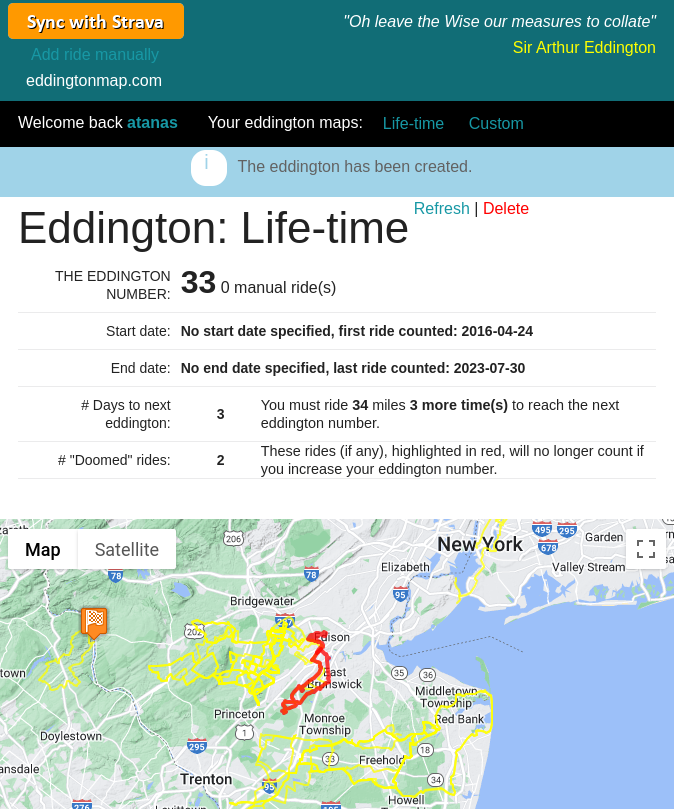Mine is 33 34 35 36 37. But let me back up a little.
I am a map geek, a data nerd, and a cyclist. As such, I always look for and find and tweak ways to measure my rides. I measure distance (of course), and speed, and elevation climbed, and power output. I throw it all into a home-grown formula that accounts for my age in days (such as if today’s ride has the exact same parameters of a ride a year ago, today’s ride would count for more because I’m older). Then I visualize it all in three different Google Sheets charts. … Normal stuff 😉
Imagine my excitement when I learned about the Eddington Number! One more data point!!!
The Eddington Number was devised by Sir Arthur Stanley Eddington (1882–1944) as a measure of a cyclist’s long-distance riding achievements. It is defined as the maximum number E such that the cyclist has cycled at least E miles on at least E days.
I found out about the Eddington Number from Ben Lockwood on Mastodon, who pointed me to a great resource, eddingtonmap.com, which takes your Strava data and calculates your Eddington Number.

My Eddington Number (E) is 33. I must ride 34 miles 3 more time(s) to reach the next Eddington Number.
What is your E?